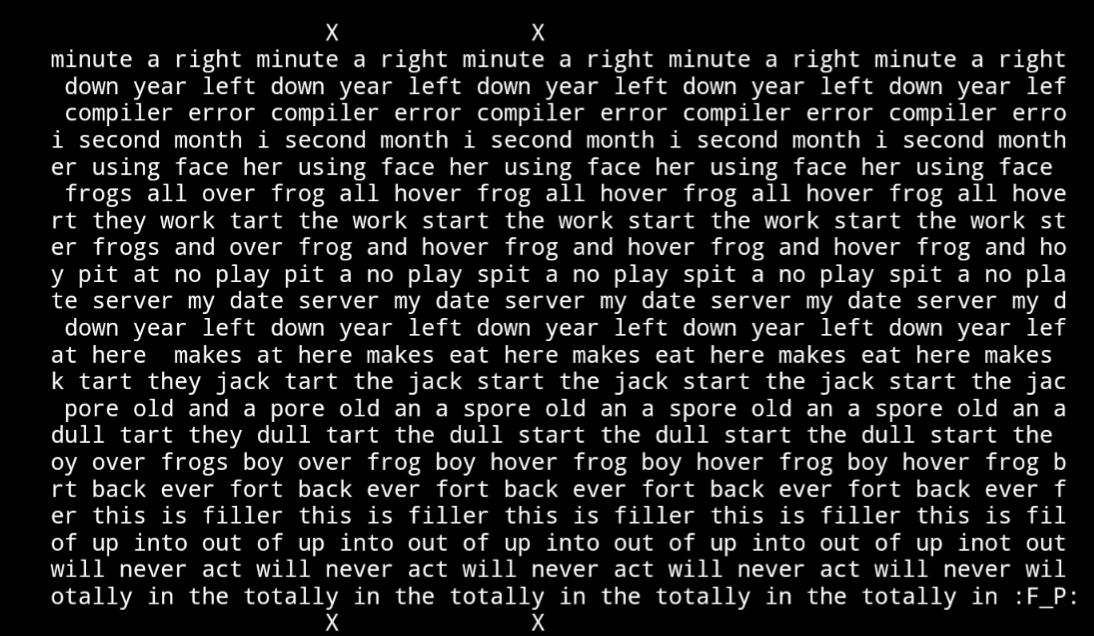Magic eye for poetry? I don't speak Spanish but I see "te quiero mucho Africa" is emphasized.
ASCII Art
A group for fans, collectors, and creators of ASCII art.
ASCII art is a graphic design technique that uses computers for presentation and consists of pictures pieced together from the 95 printable (from a total of 128) characters defined by the ASCII Standard from 1963 and ASCII compliant character sets with proprietary extended characters (beyond the 128 characters of standard 7-bit ASCII). The term is also loosely used to refer to text-based visual art in general. ASCII art can be created with any text editor, and is often used with free-form languages. Most examples of ASCII art require a fixed-width font (non-proportional fonts, as on a traditional typewriter) such as Courier for presentation.
I didn't think I've ever seen magic eye poetry, that's really cool.
What's the, uhh, symbology there?

My attempted translation as an intermediate Spanish learner:
The trees and the
forest, the brushstrokes and
The Mona Lisa. The important
things are lost
in the details, not
in plain sight.
When you realize,
you back up. You say,
I want to read between
the lines, and you discover that
there’s much more to
discover - all the
sunset on the savanna
of Africa. All the
drama and comedy of
life.
But as you pointed out, “te quiero mucho Africa” (I love you a lot Africa) is emphasized in the original Spanish, which isn’t really easily translated even when you keep the spacing the same on the words.
no entiendo la motivacion de escribirlo asi.
Hay mensaje secreta como el libro “Magic Eye”.
La mensaje es “te quiero mucho Africa”.
soy una mierda con este tipo de ilusión de vista, gracias por explicar.
